Coconut crab has a huge claw measuring about 2 feet long which it uses for defense or hunting food. They eat anything from cactus fruit, coconuts, human garbage to smaller crabs – but is coconut crab edible?
In short. Yes. Coconut crabs are edible, and people in certain countries actually eat them.
They are considered a delicacy in islands of the Indian ocean and Central Pacific Ocean, where the habitats of these creatures reside. However, they can also be poisonous sometimes.
Coconut Crab, scientifically named Birgus latro, is the world’s largest terrestrial arthropod. It can grow up to 4 feet in length and weighs up to 26 pounds
They have mighty claws that can cut off coconuts (and yes. Even our hands), but these creatures are fortunately afraid of us.
Sounds interesting? Then read on to know more interesting facts about coconut crabs with some delicious coconut crab recipes.
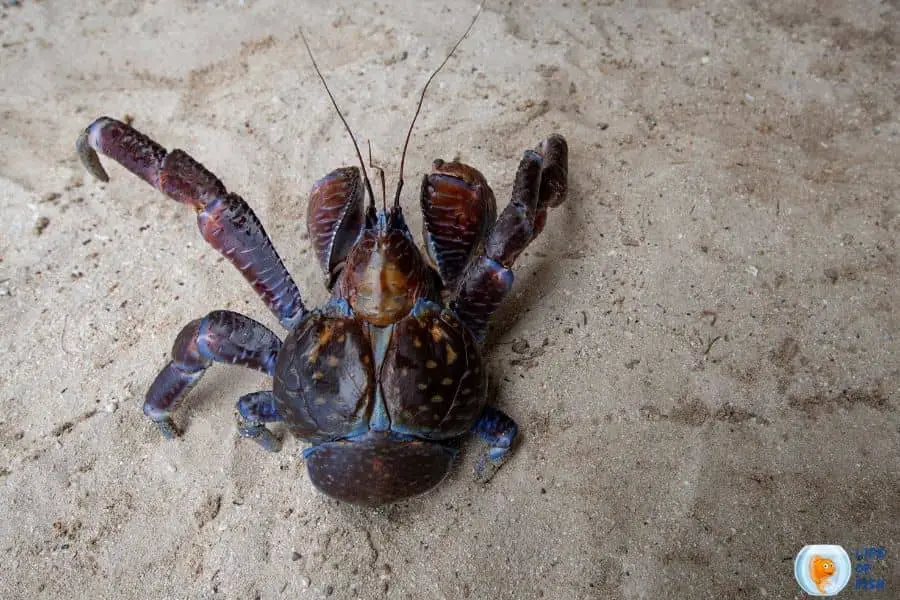
Can we eat coconut crabs?
Jump To
- 1 Can we eat coconut crabs?
- 2 Is coconut crab tasty?
- 3 Why is coconut crab so popular?
- 4 How do you cook and eat coconut crab?
- 5 Are coconut crabs poisonous?
- 6 Coconut crabs Description
- 7 What is the Coconut crab’s size?
- 8 Where do they live?
- 9 What do coconut crabs eat?
- 10 Coconut crabs appearance
- 11 Coconut crabs reproduction
- 12 Is it an endangered species?
- 13 Are coconut crabs dangerous?
- 14 Can they break bones?
- 15 Conclusion
Yes. coconut crab is edible and they are delicacies in some countries, including the Solomon Islands, Malaysia, and Polynesia.
People of those countries cook coconut crabs in different ways.
They are also considered a delicacy in parts of India’s Lakshadweep islands, where they were introduced to help control the island’s green slug problem.
People believe that the meat of coconut crabs is aphrodisiac, which increases sexual desire, enhances fertility, and improves general health.
This belief, however, has yet to be scientifically confirmed.
However, coconut crabs hunting has increased, and many populations have been drastically reduced due to this misconception.
Is coconut crab tasty?
It has a taste similar to lobster or regular crab meat, but some describe it as the taste of peanut butter.
Coconut crab eggs and fat in the abdomen are considered the most delicious parts. People eat coconut crabs after steaming or boiling them.
Does coconut crab taste like crab?
Yes. It has a taste similar to lobster or regular crab meat, so many people prefer to consume coconut crabs, though they are rare.
Why is coconut crab so popular?
There are many reasons why coconut crab is becoming popular.
People like to hunt it because it’s an easy animal to find, and its meat tastes great, making it favorite seafood for local dishes.
People also like hunting for this crab because they enjoy the thrill of hunting for something bigger than themselves.
There are numerous health benefits as well, such as the fact that coconut crabs are filled with amino acids, which reduce stress levels in people who eat them regularly.
They also act as good cholesterol-lowering agents and promote overall cardiovascular health!
Finally, if you’re trying to build muscle after an injury or illness, consuming some coconut crabs every day will help you heal more quickly than just following a strict diet plan alone.

How do you cook and eat coconut crab?
There are several ways you can prepare coconut crabs to eat. The most popular and the easiest way to prepare them is to boil them in water, which we explained below.
Boiling with saltwater
To cook coconut crab, first, chop the claws into segments of four or six pieces each. Then boil it for about 10 to 15 minutes in salted water with a few slices of onion.
Remove it from boiling liquid, let it cool slightly, and peel the shell by twisting the meat outwards over a bowl to catch excess moisture.
To eat coconut crab, cut off thin strips lengthwise on its body and enjoy them dipped in a sauce of choice!
Burn the coconut crab between coconut fronds
This is how people in Atafu prepare coconut crabs. Gather some coconut fronds and make a pile.
Then put the coconut crab on the top of the heap and cover it with some more coconut fronds.
Now, light the pile of fronds and keep the crab for about 10 to 15 minutes. Do not let the crab burn for more, as the fire will leave a coal crab without meat.
Within minutes, grab a stick and drag the coconut crab from the flame.
To eat the ash-filled crab, wash it thoroughly and smash the shell with coconut or something hard. Then, grab the meat and taste it.
Coconut Crab Curry
You can easily make coconut crab curry with the second extract of coconut milk, chili, lime juice, and salt.
Place the coconut crab in a large saucepan and pour all the ingredients into the pan. Then boil the crab in medium heat for about 12 minutes.
You can eat these boiled crabs with a sauce of your choice but, we like chili and lime sauce more.
Are coconut crabs poisonous?
Coconut crabs are not poisonous. However, sometimes they can be toxic depending on their diet and we can find some cases of coconut crab poisoning.
Experts believe that these poisons come from plant toxins, explaining why some coconut crabs are poisonous and many others not.
Let’s find out more about this unique species
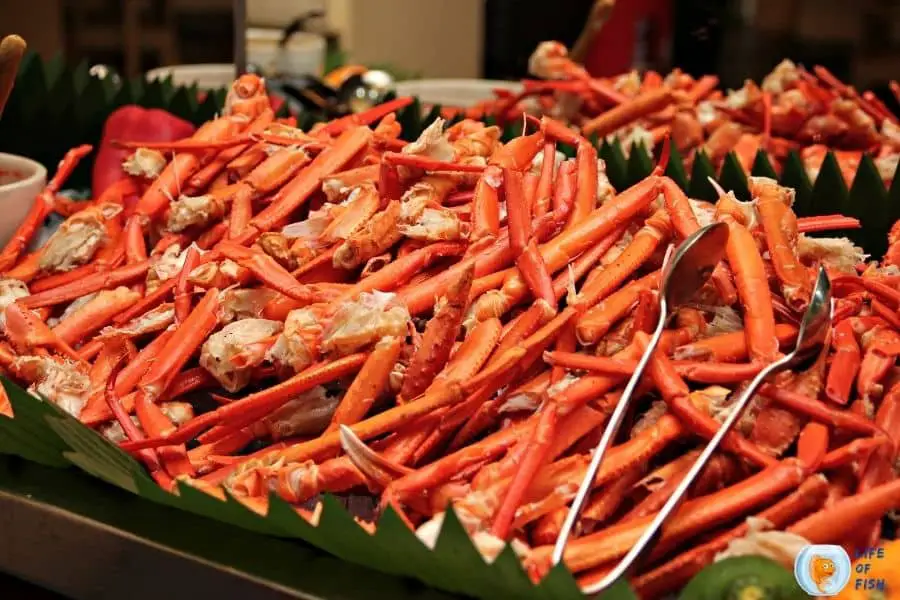
Coconut crabs Description
The coconut crab, also recognized as the palm thief or robber crab, is a terrestrial hermit crab species found in the Pacific and Indian oceans.
It is the only species of the Birgus genus and known as the largest terrestrial arthropod in the world.
The coconut crab distribution include; tropical climates of Indian, Pacific, and Atlantic Oceans like Seychelles, Hawaii, etc., including the Gambier Islands and the Pitcairn Islands.
They also live off the coast of Africa near Zanzibar.
Coconut crabs have an enormous claw with a massive crushing pincer – which can have a strength of about 300 newtons.
“palm thief” is another name for coconut crab, because they are famous for stealing fruit in plantations.
Many homeowners near coconut crab populations often find empty coconuts on their property but do not know how the crabs got there.
What is the Coconut crab’s size?
Robber crabs are one of the largest terrestrial arthropods globally, weighing up to 4.1kg and having a leg span of up to 1m – with the average being around 70cm.
Their body length reaches about 40cm, and usually, males are more significant in size than females.
According to some reports, coconut crabs have been found as heavy as 17kg and have a body length of 1m.
In terms of lifespan, They live more than 60 years!
Where do they live?
Robber crab lives in tropical areas and throughout the Indian Ocean, especially on Christmas Island.
They also exist in Pacific Islands, especially in Mangaia, Takutea, Pukapuka, Suwarrow, Mauke, Atiu, and Palmerston.
You can also find them on Seychelles, Andaman, and the Nicobar Islands in the Bay of Bengal.
They are solitary species that live alone in underground burrows and rock crevices, which they dig on their own.
These creatures usually stay hidden during the daytime to protect from predators and avoid water loss from heat.
They will occasionally come out during the day if it is humid or rainy, as this allows them to breathe more freely.
Robber crab is a terrestrial animal and can not breathe or swim in the water. If somehow they fall into the water, they will die.
Did You Know? Coconut Crabs breathe using a special organ called the branchiostegal lung.
This organ is a developmental stage between gills and lungs and is one of the coconut crab’s most important ecological adaptations.
They have gill-like tissue, but it absorbs oxygen from the air rather than water.
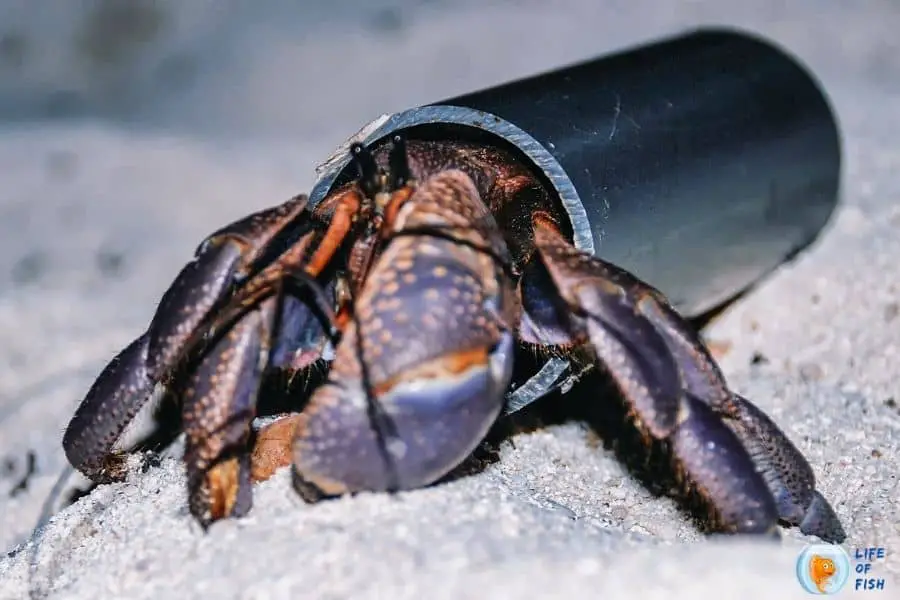
What do coconut crabs eat?
They live in forests with plenty of palm trees, which is how they got their name as diet of coconut crabs consists primarily of coconuts.
But they will also feed upon other things such as meat, carrion, fruit, figs, and vegetables that fall from nearby trees to the ground below.
Coconut crabs are famous as scavengers because they also eat nearly anything that is organic.
For example, they feed on dead animals, rotten fruit, leaves, tortoise eggs, shells of other animals, and even their own species because, as experts believe, this food provides calcium to these creatures.
Despite their size, coconut crabs climb trees to eat fruits, mainly coconuts, escape predators, and escape the heat.
When eating coconuts, these animals have unique behavior. They cut holes in coconuts with their strong claws and eat the inside contents (coconut meat).
This type of behavior is seen only in coconut crabs in the animal world.
Coconut crabs appearance
Coconut crabs are the biggest terrestrial arthropods in the world and can be as large as a coconut (hence the name).
The average weight of an adult coconut crab is about nine pounds, with some individuals known to weigh up to 17kg.
Generally, these crabs are brownish in color with white markings on their body, legs, and claws. But, it is not uncommon to see red or purplish-blue coconut crabs in some areas.
They have long antennae-like appendages that extend from their head that are for smelling.
robber crab has ten legs, in which the front-most pair being the chelae (claws). They do not have a shell around their body, which is why they grow much larger than other hermit crabs.
Their armor-like exoskeleton protects them from predators, and they also have sharp claws that allow them to tear open coconuts, which makes their diet mainly made of coconuts.
Read More: 10 Interesting Facts About Cute Thai Micro Crab (Limnopilos naiyanetri)
Coconut crabs reproduction
Coconut crabs are known for their unique reproduction behavior. Reproduction happens between May and September, especially in July and August.
Before spawning, the male and female fight each other. Eventually, the male turns the female on her back and mates for about 15 minutes.
Shortly after, the female lays eggs and glues them to the bottom of her abdomen, holding the fertilized eggs beneath her body for a few months.
When it is time to hatch the eggs, the female coconut crab releases them into the ocean at high tide.
Coconut crab eggs hatch in the ocean and the juvenile coconut crabs live on the ocean floor and on the shore for several months, a large number of them being prey to the predators.
Then they leave the ocean to live on land as they lose the ability to breathe in the water. It takes about 4 to 8 years for small coconut crabs to become adult coconut crabs after hatching.
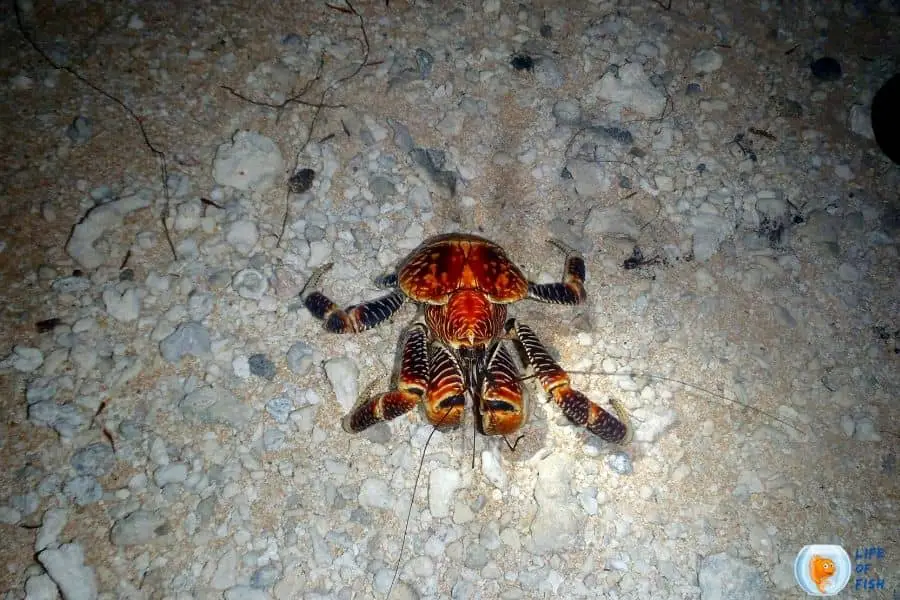
Is it an endangered species?
Even though coconut crabs are not an endangered species according to IUCN Red List, they were listed as “Vulnerable” species in 2018.
Their populations in some areas have been declined due to habitat loss and human predation for food.
Therefore, in some countries, such as Guam and Vanuatu, the government has put some restrictions on capturing these species.
It is forbidden to capture egg-bearing females, and only non-egg-bearing adults that are smaller than carapace length of 76 mm can be caught in these areas.
Are coconut crabs dangerous?
Generally, coconut crabs are not dangerous to humans because they are afraid of humans and would keep their distance all the time.
Coconut crabs can be dangerous if provoked or mishandled, as their large claws could potentially damage a person.
They have some of the most powerful pincers in the animal kingdom that can do severe damage to humans if attacked.
While this is rare, it occasionally happens as these animals will attack for self-defense purposes when threatened or cornered.
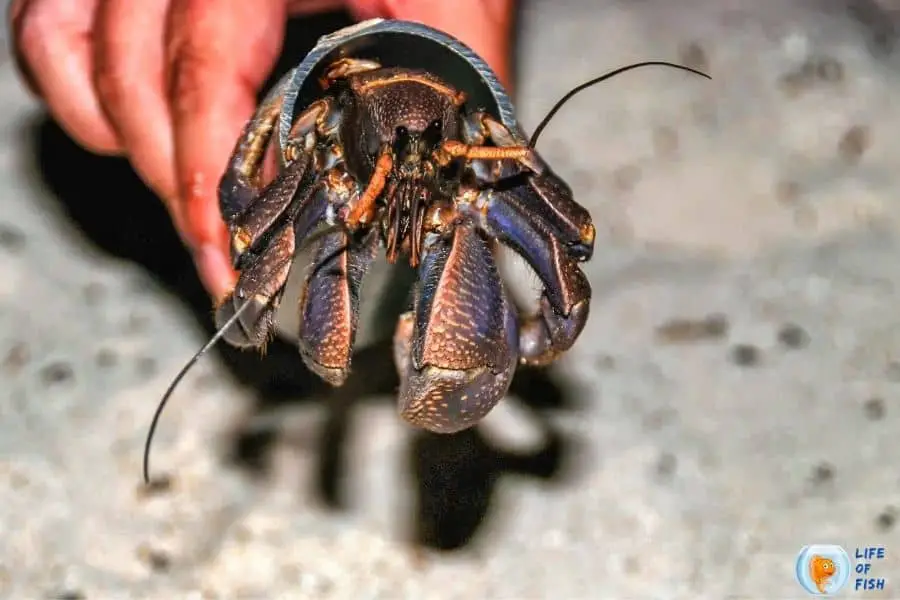
Can they break bones?
Coconut crabs can break bones and can inflict fatal wounds on animals that cannot defend themselves.
According to research by Okinawa Churashima Foundation, Japan, Coconut crab claws are significantly stronger than human hands, with an average grip strength of 300 newtons.
When threatened, the robber crab will wave its claws menacingly and clack them together in warning – much like a threatening Rottweiler might do if it detected an intruder.
When it is agitated, such as when humans or dogs have invaded its burrow, the coconut crab waves its immense claws even more wildly and inflicts any human or animal close enough with severe lacerations.
Up-close encounters with alarmed coconut crabs usually end up with deep bloody incisions caused by these powerful apparatuses.
Conclusion
Although coconut crabs have an odd look, their meat has a delicious taste that most of you will like. It tastes like crab or lobsters and also has a sweet taste like peanut butter.
While it is nice to have a bite of coconut crabs, we advise against it if you don’t have any experience eating exotic food because sometimes, coconut crabs can be toxic.
Read Next: How Are Jellyfish Born? | 8 Interesting Facts On Jellyfish Life Cycle |
